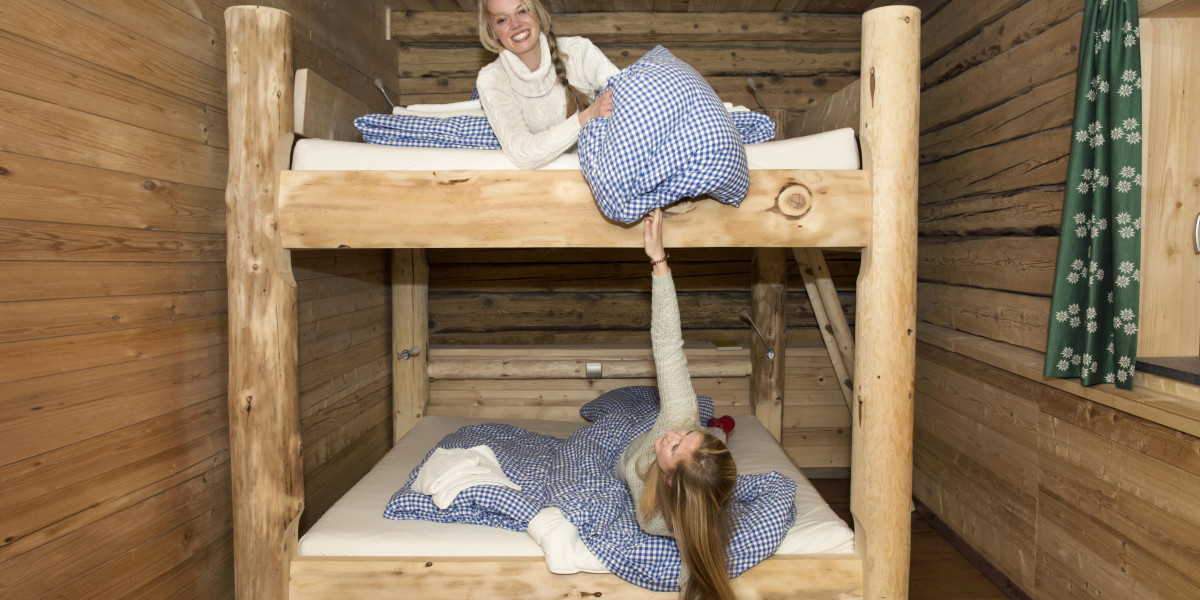
The Ultimate Guide to Bunk Beds for Kids: Safety, Styles, and Solutions
Bunk beds have actually long been a popular option amongst moms and dads looking for to optimize space in their children's bed rooms. With advantages that go beyond their compact style, bunk beds use a fun and practical sleeping arrangement while motivating sibling bonding and fostering creativity. In this thorough guide, we explore various elements of bunk beds for kids, including security considerations, various styles available, and suggestions for picking the ideal one for your household.
Why Choose Bunk Beds?
Bunk beds are created to stack one bed on top of another, utilizing vertical space to develop more room for play and storage. They are especially beneficial for households with several children or limited bed room space. In addition, they supply an adventurous sleeping environment that children frequently take pleasure in.
Key Advantages of Bunk Beds:
- Space-saving style: Ideal for little spaces or shared areas.
- Cost-efficient: Often more economical than buying 2 different beds.
- Motivates social interaction: Promotes bonding among brother or sisters or friends.
- Flexible choices: Available in numerous styles and configurations to match any room style.
Safety First: Essential Considerations
When selecting a bunk bed for kids, security should be the top concern. The following functions are important for guaranteeing a protected sleeping environment:
Important Safety Features:
- Sturdy Construction: Ensure that the bed frame is made from durable products such as solid wood or metal.
- Guardrails: Bunk beds ought to have guardrails on both sides of the upper bunk to avoid falls.
- Ladder Safety: A durable, integrated ladder or stairs with anti-slip rungs is necessary for safe access to the leading bunk bed near me.
- Weight Limit: Check the maker's weight limit capability for both the top and bottom bunk.
- Bed mattress Size: Use the right mattress size as specified by the bed maker to guarantee a tight fit within the bed frame.
Safety Tips for Parents:
- Monitor Sleep Habits: Teach children the value of not using or jumping off the bunk beds.
- Age Appropriateness: Generally, the upper bunk is suitable for children aged 6 and older.
- Regular Inspections: Periodically check for any loose bolts, screws, or structural damage.
Styles of Bunk Beds
Bunk beds are available in a range of designs, enabling moms and dads to choose one that complements their child's room decor while conference specific needs. Below are some popular styles:
Popular Bunk Bed Styles:
- Traditional Bunk Beds: Simple and classic styles made of wood or metal without any extra features.
- Loft Beds: Features a raised leading bunk with space beneath for a desk, play location, or additional storage.
- L-Shaped Bunk Beds: Arranged in an L-shape, frequently ideal for corner areas and can have extra storage options.
- Twin over Full Bunk Beds: A twin bed on leading and a larger full-sized bed on the bottom, accommodating kids bunk bed or teens of different ages.
- Triple Bunk Beds: Designed to fit three beds in a single footprint, perfect for larger families or sleepovers.
A Comparison of Bunk Bed Styles
| Bunk Bed Style | Description | best bunk beds For |
|---|---|---|
| Standard | Traditional design with two stacked beds | Requirement bed room setups |
| Loft Bed | Raised bed with usable space beneath | Homework or play areas |
| L-Shaped | Bunk beds organized in an L-shape | Corner areas |
| Twin over Full | Twin bed on top, complete bed below | Various age brother or sisters |
| Triple Bunk | Three stacked beds | Large households or pajama parties |
Choosing the Right Bunk Bed
When browsing for the best bunk bed, think about the list below elements to guarantee you make a notified choice:
Key Factors to Consider:
- Room Size: Measure the room measurements to identify the proper size and height of the bunk bed on sale bed.
- Child's Age: Consider the age of your child(ren) when picking a style and safety features.
- Functionality: Think about just how much storage or play space you need and whether the bunk bed ought to serve additional purposes.
- Spending plan: Set a budget that includes not only the bunk bed however also the required bed mattress and accessories like bedding or safety gates.
FAQs About Bunk Beds for Kids
1. What age is proper for a child to oversleep the top bunk?
Normally, children aged 6 and older ought to have the ability to securely oversleep the top bunk, though you ought to always consider your child's maturity level.
2. Are bunk beds safe for young children?
It is not recommended for young children or very kids to sleep in the leading bunk due to the risk of falling.
3. How do I keep the bunk bed?
Check the bed routinely for any signs of wear and tear, tightening screws, and cleaning up the bed mattress to make sure prolonged safety and durability.
4. Can I convert a bunk bed into two separate beds?
Lots of bunk beds are designed to be convertible, enabling you to separate the beds when needed. Inspect the maker's specifications before acquiring.
5. How can I optimize space in a bunk bed space?
Utilize under-bed drawers, shelves, or lofted designs to develop additional storage options in a room with a bunk bed.
Bunk beds offer a delightful mix of fun, functionality, and space-saving utility, making them a best bunk beds option for young households. By thinking about security functions, various designs, and useful factors such as room size and age appropriateness, parents can pick the ideal bunk bed for their child's requirements. With the ideal choice, bunk beds can change a bed room into a wonderful space that encourages play, imagination, and bonding among siblings. Always keep in mind to prioritize security and maintenance to maximize this distinct sleeping plan.



